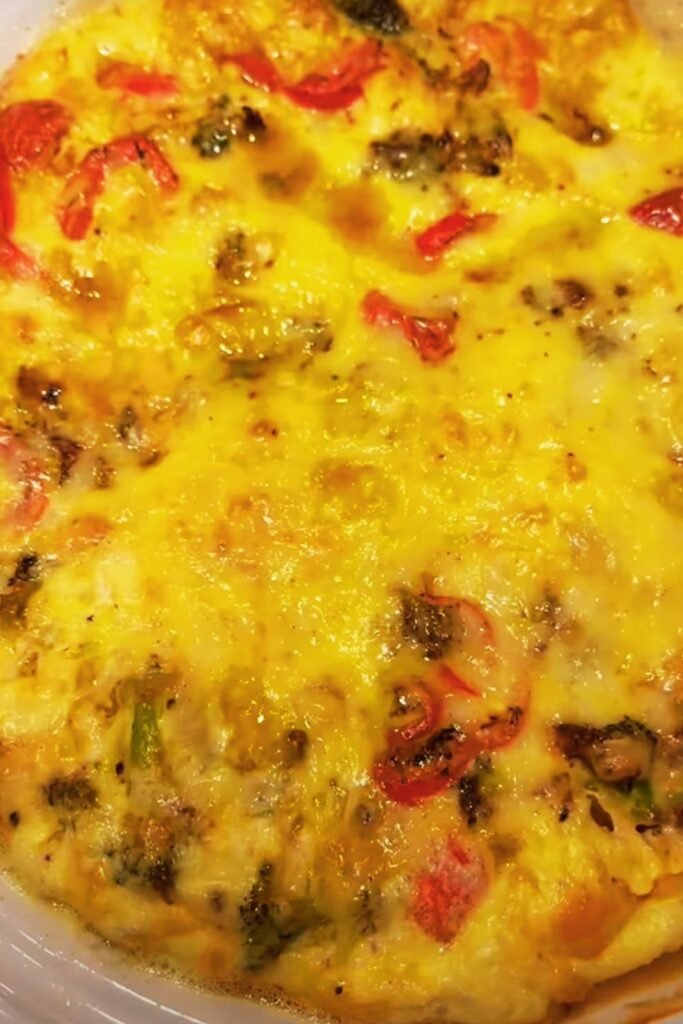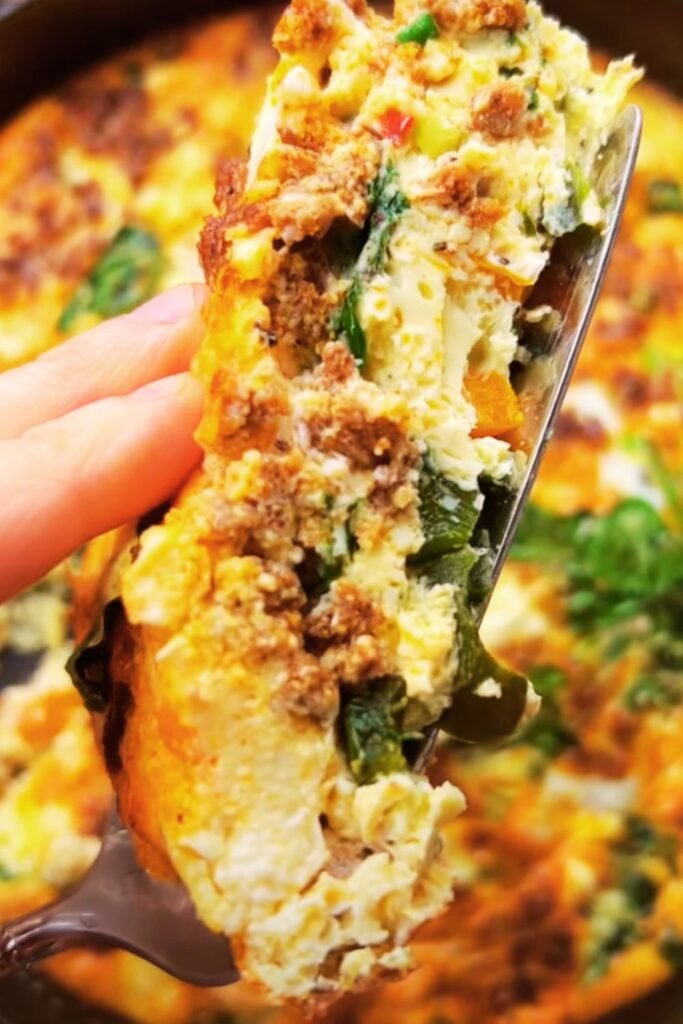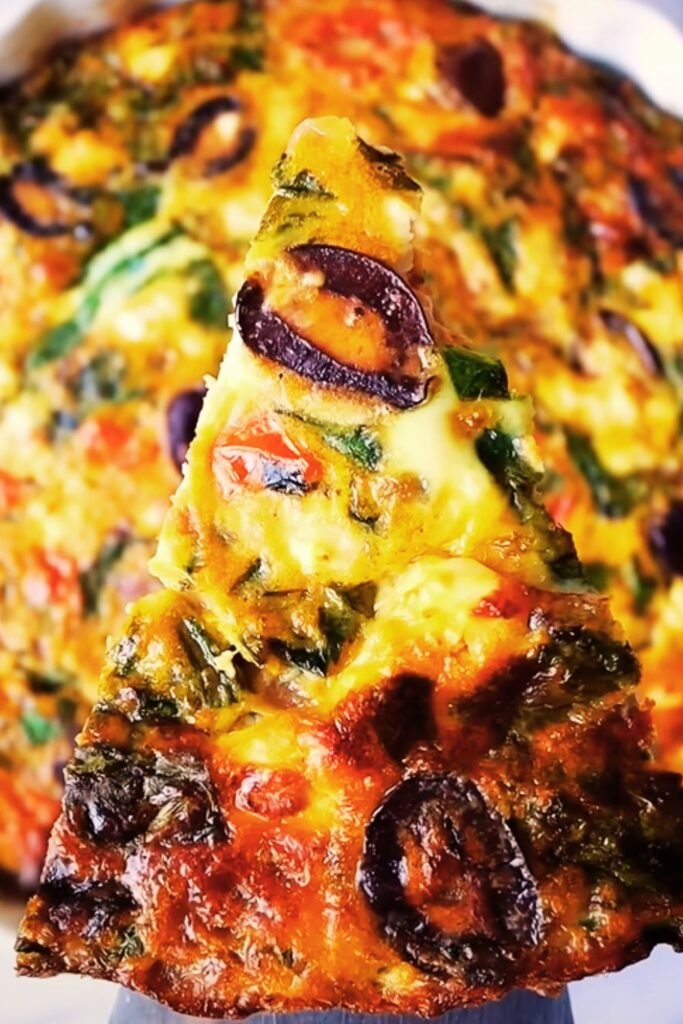I’ve been making frittatas for over fifteen years, and I can honestly say they’re one of my favorite go-to meals. Whether I’m hosting a weekend brunch, need a quick weeknight dinner, or want to use up leftover vegetables, frittatas never disappoint me. Today, I’m sharing everything I’ve learned about creating these versatile egg dishes using both stovetop and baked methods.
What Makes a Perfect Frittata?
A frittata is an Italian egg dish that’s similar to an omelet but much easier to master. Unlike omelets that require folding technique, frittatas cook flat and can feed multiple people. I love how forgiving they are – you can add almost any ingredient and still end up with something delicious.
Key Terms:
- Frittata: An Italian open-faced egg dish cooked slowly until set
- Mise en place: Having all ingredients prepped and ready before cooking
- Carryover cooking: The continued cooking that happens after removing from heat
- Custard-like texture: The ideal creamy, set consistency of a perfect frittata
My Essential Equipment and Ingredients
Equipment I Always Use
I’ve learned that having the right tools makes all the difference. Here’s what I consider essential:
- Cast iron or oven-safe non-stick skillet (10-12 inches): My cast iron skillet is my absolute favorite for frittatas
- Whisk: For properly combining eggs and creating that smooth texture
- Rubber spatula: Essential for gentle stirring and folding
- Measuring cups and spoons: Accuracy matters, especially with eggs
- Sharp knife and cutting board: For prep work
- Oven mitts: Safety first when handling hot skillets
Core Ingredients
For the Base:
- 8-12 large eggs (depending on skillet size)
- 2-4 tablespoons heavy cream or whole milk
- Salt and freshly ground black pepper
- 1-2 tablespoons olive oil or butter
Popular Add-ins I Love:
- Cheeses: Gruyère, goat cheese, cheddar, feta, parmesan
- Vegetables: Spinach, bell peppers, onions, mushrooms, tomatoes
- Herbs: Basil, chives, parsley, thyme, oregano
- Proteins: Ham, bacon, smoked salmon, sausage
Detailed Comparison: Stovetop vs. Baked Methods
| Aspect | Stovetop Method | Baked Method |
|---|---|---|
| Cooking Time | 12-15 minutes total | 20-25 minutes total |
| Temperature Control | Medium-low heat throughout | 375°F oven after stovetop start |
| Texture Result | Slightly denser, more traditional | Fluffier, more custard-like |
| Skill Level | Intermediate (requires timing) | Beginner-friendly |
| Equipment Needed | Stovetop only | Stovetop + oven |
| Best For | Quick meals, small batches | Meal prep, serving crowds |
| Risk of Overcooking | Higher (requires attention) | Lower (more forgiving) |
| Cleanup | One pan | One pan |
My Foolproof Stovetop Method
I perfected this technique through countless weekend brunches. The key is patience and low heat.
Preparation Steps
- Prep all ingredients first: I cannot stress this enough. Have everything chopped, measured, and ready to go.
- Whisk eggs properly: In a large bowl, I whisk 8-10 eggs until completely smooth. I add 3 tablespoons of heavy cream, 1 teaspoon salt, and ½ teaspoon black pepper.
- Heat the skillet: I warm my 10-inch cast iron skillet over medium heat and add 2 tablespoons olive oil.
Cooking Process
- Sauté aromatics: I start with onions, cooking them for 3-4 minutes until translucent. Then I add other vegetables that need cooking time.
- Pour in eggs: Once vegetables are ready, I pour the egg mixture into the skillet. The eggs should sizzle gently but not aggressively.
- Gentle stirring: For the first 2-3 minutes, I gently stir the eggs, pulling them from the edges toward the center. This creates those lovely soft curds.
- Add final ingredients: I sprinkle cheese and herbs over the top, then stop stirring completely.
- Cook until almost set: I reduce heat to medium-low and let it cook for 8-10 minutes. The edges should be set, but the center still slightly jiggly.
- Final browning: I increase heat to medium for the last 2-3 minutes to create a golden bottom.

My Reliable Baked Method
This is my go-to method when I’m cooking for guests or want a more hands-off approach.
Preparation and Initial Cooking
- Preheat oven to 375°F: I always start with proper preheating – it makes a huge difference.
- Prepare ingredients: Same as stovetop method – everything ready before I start.
- Start on stovetop: I sauté vegetables in my oven-safe skillet over medium heat for 3-5 minutes.
- Add eggs: Pour in the whisked egg mixture and cook for 3-4 minutes, stirring gently just a few times.
Oven Finishing
- Add toppings: I sprinkle cheese and herbs over the surface.
- Transfer to oven: Using oven mitts, I move the skillet to the preheated oven.
- Bake until set: It takes 12-15 minutes. I check by gently shaking the skillet – the center should be just barely set.
- Rest before serving: I let it cool for 5 minutes before slicing. This prevents a runny mess.
Ingredient Combinations That Never Fail Me
Classic Mediterranean
- Base: 10 eggs with 3 tbsp cream
- Vegetables: Diced tomatoes, spinach, red onion
- Cheese: Feta and fresh mozzarella
- Herbs: Fresh basil and oregano
- Extra flavor: Kalamata olives, sun-dried tomatoes
Hearty Western Style
- Base: 12 eggs with 4 tbsp milk
- Vegetables: Bell peppers, onions, jalapeños
- Protein: Diced ham or cooked bacon
- Cheese: Sharp cheddar
- Herbs: Chives and parsley
Elegant Herb Garden
- Base: 8 eggs with 2 tbsp cream
- Vegetables: Leeks, asparagus
- Cheese: Goat cheese and gruyère
- Herbs: Fresh thyme, chives, and dill
- Extra: A touch of lemon zest

Nutritional Information Breakdown
| Nutrient | Per Serving (1/8 of frittata) | Daily Value % |
|---|---|---|
| Calories | 185-220 | 9-11% |
| Protein | 14-16g | 28-32% |
| Fat | 12-15g | 18-23% |
| Carbohydrates | 3-6g | 1-2% |
| Fiber | 1-2g | 4-8% |
| Calcium | 150-200mg | 15-20% |
| Iron | 2-3mg | 11-17% |
| Vitamin A | 300-400 IU | 6-8% |
| Vitamin B12 | 1.2-1.5mcg | 50-62% |
Values vary based on specific ingredients used
Common Mistakes I’ve Made (And How to Avoid Them)
Temperature Issues
I used to cook frittatas too hot and fast. High heat creates rubbery eggs and burnt bottoms. Medium to medium-low heat is your friend.
Overcooking
My early frittatas were often dry and tough. I learned to remove them when the center is still slightly jiggly – carryover cooking finishes the job.
Wrong Pan Size
Using a pan that’s too large creates thin, overcooked frittatas. Too small, and you get thick, undercooked centers. A 10-inch skillet works perfectly for 8-10 eggs.
Skipping the Rest Period
I used to serve frittatas immediately and wondered why they fell apart. That 5-minute rest allows everything to set properly.
Storage and Reheating Guide
| Storage Method | Duration | Best Reheating Method | Quality Rating |
|---|---|---|---|
| Room Temperature | 2 hours max | Not recommended | Good |
| Refrigerated | 3-4 days | Oven at 300°F for 10 min | Excellent |
| Frozen (whole) | 2-3 months | Thaw overnight, then oven | Good |
| Frozen (sliced) | 2-3 months | Microwave 30-60 seconds | Fair |
I prefer storing whole frittatas in the refrigerator and reheating slices in a low oven. Microwaving works for quick breakfasts, but the texture isn’t quite as good.
Serving Suggestions and Pairings
Breakfast and Brunch
I love serving frittatas with:
- Fresh mixed greens with lemon vinaigrette
- Toasted sourdough or crusty artisan bread
- Fresh fruit salad or berries
- Crispy hash browns or roasted potatoes
- Greek yogurt with honey
Lunch and Dinner
For heartier meals, I pair frittatas with:
- Caesar salad or arugula salad
- Roasted vegetables like Brussels sprouts or carrots
- Garlic bread or focaccia
- Soup (tomato basil is my favorite)
- Avocado slices with lime

Troubleshooting Guide
Problem: Frittata is too wet in the center
Solution: Cook longer on stovetop before adding to oven, or increase oven time by 3-5 minutes.
Problem: Bottom burns before top sets
Solution: Lower heat and cook more slowly. Use a lighter-colored pan if possible.
Problem: Frittata deflates after cooking
Solution: This is normal! Don’t open the oven door during cooking, and let it rest before cutting.
Problem: Eggs are rubbery
Solution: Reduce cooking temperature and avoid overcooking. Add more cream or milk to the egg mixture.
Problem: Vegetables release too much water
Solution: Sauté vegetables completely before adding eggs, and pat wet vegetables (like tomatoes) dry.
Advanced Tips I’ve Learned Over the Years
Flavor Building
I always sauté aromatics first to build a flavor foundation. Onions, garlic, and shallots create depth that raw additions can’t match.
Cheese Strategy
I add half the cheese to the egg mixture and reserve half for the top. This creates layers of flavor and ensures cheese throughout.
Herb Timing
Delicate herbs like basil and parsley go in at the end, while heartier ones like thyme and rosemary can handle longer cooking.
Texture Secrets
For extra richness, I sometimes add a tablespoon of cream cheese or mascarpone to the egg mixture. It creates an incredibly creamy texture.
Seasonal Variations I Love
Spring Frittata
Fresh asparagus, peas, leeks, and herbs from my garden make this version sing. I use goat cheese and finish with lemon zest.
Summer Garden
Tomatoes, zucchini, bell peppers, and fresh basil capture summer perfectly. Mozzarella and parmesan work beautifully here.
Fall Harvest
Roasted butternut squash, caramelized onions, and sage create a cozy autumn version. Gruyère cheese complements these flavors perfectly.
Winter Comfort
Hearty ingredients like potatoes, bacon, and cheddar make this substantial enough for cold nights. I add a touch of smoked paprika for warmth.
Questions and Answers
Q: Can I make frittata ahead of time for meal prep? Absolutely! I make frittatas on Sunday and eat them throughout the week. They keep beautifully in the refrigerator for 3-4 days and reheat well in a low oven.
Q: What’s the best cheese for frittatas? I love using a combination of cheeses. Gruyère adds nuttiness, feta brings tang, and goat cheese creates creaminess. Avoid pre-shredded cheese when possible – freshly grated melts much better.
Q: Can I use egg whites only for a lighter version? Yes, but you’ll need to adjust the ratios. I use about 12-16 egg whites to replace 8-10 whole eggs, and I always add a little extra cream to prevent dryness.
Q: Why does my frittata stick to the pan? This usually happens with insufficient fat or too high heat. I always use plenty of oil or butter and cook at moderate temperatures. A well-seasoned cast iron or good non-stick pan helps tremendously.
Q: Can I add raw vegetables directly to the egg mixture? Some vegetables work raw (like spinach or herbs), but most benefit from sautéing first. This removes excess moisture and develops better flavors. I always cook onions, peppers, and mushrooms before adding eggs.
Q: How do I know when my frittata is perfectly done? The edges should be set and lightly golden, while the center should be just barely jiggly when you shake the pan gently. It will continue cooking from residual heat after you remove it.
Q: Can I freeze frittata for later? Yes! I wrap cooled frittatas tightly in plastic wrap and freeze for up to 3 months. I prefer freezing them whole rather than in slices for better texture retention.
Q: What’s the difference between a frittata and a quiche? Frittatas don’t have a crust and use fewer eggs relative to other ingredients. They’re also cooked differently – starting on stovetop versus baking entirely in the oven like quiche.
Q: Can I make mini frittatas in muffin tins? Definitely! I grease muffin tins well and bake at 350°F for 15-20 minutes. They’re perfect for portion control and grab-and-go breakfasts.
Q: How can I make my frittata more fluffy? The baked method typically produces fluffier results. I also separate a few eggs, whip the whites to soft peaks, and fold them in just before cooking for extra lift.
Making perfect frittatas has become second nature to me after years of practice. Whether you choose the stovetop or baked method, remember that patience and gentle heat are your best friends. Don’t be afraid to experiment with different ingredient combinations – some of my best frittatas came from cleaning out my refrigerator! The beauty of this dish lies in its versatility and forgiving nature. Once you master the basic technique, you’ll find yourself reaching for eggs and whatever ingredients you have on hand to create satisfying meals any time of day.